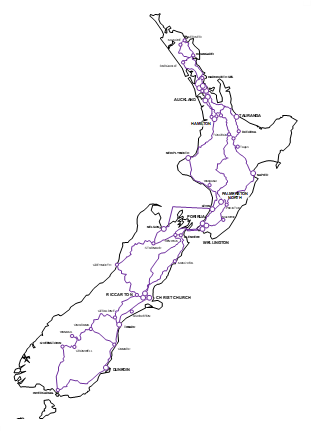Always-on network connectivity is no longer a privilege, it’s an expectation. Ivan Polizzi, Ciena’s Regional Managing Director of Australia, New Zealand, and the Pacific, details some of the reasons why network resilience is critical to providing end users with round-the-clock access to the data they demand in the increasingly on-demand world we live in.
We all know that network connectivity is a fundamental part of modern life and is expected to be available at any time, when and where we need it. To deliver what end users require, particularly for business-critical operations, or to avoid the financial penalties and reputation damage resulting from outages, today’s networks must be designed and built to provide maximum reliability and availability.
Network resilience is a key factor in providing acceptable levels of service. To successfully deal with inevitable faults and resume operations quickly, networks must be resistant to disruption, able to recover rapidly and autonomously, capable of scaling to sudden demand surges, and be “self-healing”.
This is especially true of networks servicing critical infrastructure services such as energy production, water management, and cargo transportation. Today, these operations rely on networked sensors and equipment to run day-to-day safely.
Multiple paths towards resilience
A resilient, self-healing network – one that will continue to provide connectivity even during an emergency – is a necessity. This is especially true in environments prone to severe weather events and other natural disasters that can damage network equipment. Service providers in Australia and New Zealand operate in some of the harshest natural environments on our planet, dealing with natural disasters such as fire, floods, cyclones, and earthquakes. To maintain connectivity in the face of all this requires the construction of networks with multiple redundant paths. Higher layer protection mechanisms typically provide immediate service restoration following a network fault but, especially in the case of natural disasters, may leave the network and services at risk of catastrophic failure for a prolonged period of time due to subsequent events. Optical restoration provides a powerful mechanism to reduce those risks as it will continue to restore through available working network paths.
Effective network resilience relies on mesh networks that maintain multiple nodes to isolate problem areas and create alternate paths to ensure network connectivity. For example, a rail provider operating in our challenging landscape divided their signalling network into distinct rings that provide multiple redundancies. This design, coupled with smart-management technology, provides alternate paths for data to travel in the event a section is disrupted in any manner – all the way up to a physical fibre cut.
Keeping networks healthy
Another solution is to leverage intelligent software control and analytics-driven automation, which integrate artificial intelligence and machine learning into network management systems and enable self-healing and self-optimising networks to handle many service issues without the need for human intervention.
In New Zealand, Spark has rolled out a next-gen Optical Transport Network (OTN 2.0) that incorporates real-time analytics, Liquid Restoration, and PinPoint OTDR troubleshooting. Working in concert, these tools can quickly and sometimes preemptively identify faults, restore traffic to alternative paths, and precisely identify hardware faults so that technicians know exactly what to repair and/or replace. This means that if an issue does arise, data will keep moving, and service on OTN 2.0 will continue where network paths are available.
According to Spark, their OTN 2.0 network infrastructure has the potential to carry at least seven times more capacity than their first-generation OTN. “The advanced monitoring and troubleshooting tools we’ve implemented allow the network to ‘self-heal’ through optical restoration in the event of a problem, while allowing us to see what is happening and enabling them to identify and address trouble spots,” said Michael Molony, Network Evolution Tribe Lead for Spark NZ.
With the global appetite for data only growing and end users demanding round-the-clock access, network operators must take precautions to ensure constant network availability. It will also be critical in the ongoing expansion of the Internet of Things (IoT), which demands always-on connectivity to enable everything from smart kitchens to autonomous driving, medical telemetry, and even city management.
As we see demand grow, networks expand, and time-sensitive IoT applications – digital twinning, remote robotic healthcare, and automated manufacturing – mature, reliable, consistent connections will be vital to ensure both customer satisfaction and public safety. In this developing environment, operators must proactively implement contingencies as solutions to enable resilient networks that deliver connectivity to end users at all times in any situation.






